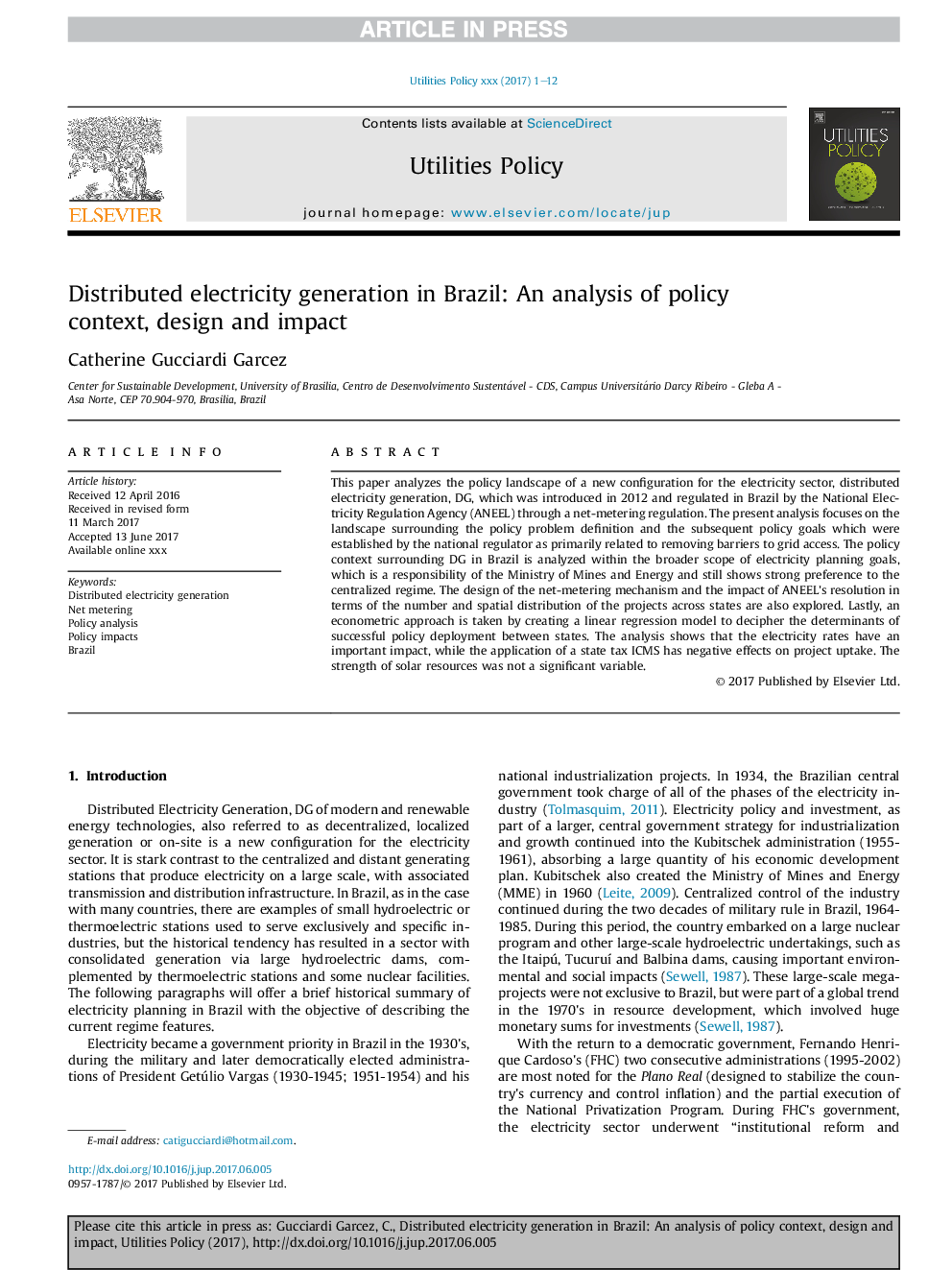| Article ID | Journal | Published Year | Pages | File Type |
|---|---|---|---|---|
| 7411406 | Utilities Policy | 2017 | 12 Pages |
Abstract
This paper analyzes the policy landscape of a new configuration for the electricity sector, distributed electricity generation, DG, which was introduced in 2012 and regulated in Brazil by the National Electricity Regulation Agency (ANEEL) through a net-metering regulation. The present analysis focuses on the landscape surrounding the policy problem definition and the subsequent policy goals which were established by the national regulator as primarily related to removing barriers to grid access. The policy context surrounding DG in Brazil is analyzed within the broader scope of electricity planning goals, which is a responsibility of the Ministry of Mines and Energy and still shows strong preference to the centralized regime. The design of the net-metering mechanism and the impact of ANEEL's resolution in terms of the number and spatial distribution of the projects across states are also explored. Lastly, an econometric approach is taken by creating a linear regression model to decipher the determinants of successful policy deployment between states. The analysis shows that the electricity rates have an important impact, while the application of a state tax ICMS has negative effects on project uptake. The strength of solar resources was not a significant variable.
Related Topics
Physical Sciences and Engineering
Energy
Energy (General)
Authors
Catherine Gucciardi Garcez,
